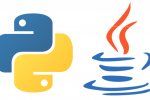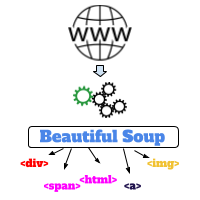Python Tutorial : #1 Introduction to Python
Python is a most popular programming language which was created by Guido van Rossum and python is the successor of the ABC programming language. We will cover a brief Introduction to Python in this article. Guido started working on Python language in late 1980s and its first version named as Python 0.9.0 was released in 1991, then the second version Python 2.0 was released in 2000 and the third one Python 3.0 was released in 2000. Recently (year 2020) released version of python is 3.9.0 with many new features.
What is Python?
1. Python is a General Purpose language:
It means Python can be used in variety of areas like Web / Desktop applications, Data science, Machine learning, Artificial Intelligence, Mathematics etc.
Opposite to this Domain specific languages can only be used for particular task like HTML is used to create web pages, CSS is used to give layout to web pages, JavaScript to make web pages interactive etc.
2. Python is a simple language:
We will write down a basic “Hello World” program using C Language, Java and Python.
In C:
|
1 2 3 4 5 6 |
# include<stdio.h> int main() { printf(“Hello World\n”); return 0; } |
In Java :
|
1 2 3 4 5 |
public class test { public static void main (String args[ ] ) { System.out.println (“ Hello World ”) ; } } |
In Python:
|
1 |
print(“Hello World”) |
From above 3 examples we can easily say that Python is a very simple language.
In C , to understand this basic program one should understand what is the meaning of # include, main(), printf(), \n and return 0, it needs to understand so many things in Java as well.
Opposite to this in Python, same program is written in just 1 line so this simplicity is useful for beginners, its syntax is more like English statement which doesn’t include semicolon or brackets.
3. Python is an Interpreted language :
C/ C++ are compiled languages, means before the execution of your program, compilation process happens which translates your human understandable code to machine understandable format (Machine code) which is a lengthy 5 steps process.
Opposite to this, Since Python is an Interpreted Language, The Python code must be executed using Python Interpreter as soon as it is written (each line of Human understandable code is passed to an Interpreter that converts it to Byte Code at run time).
4. Python is an Object Oriented language :
It means that all of its components are broken down into little things which are nothing but an Objects and it makes Python simple.
5. Python is a High level language :
A computer program is nothing but a group of instructions that enable a computer to perform a particular task, so these programs can be written in High or Low level languages.
HLL are written in a form which is close to human language, it enables the programmer to focus on the problem logic and no particular knowledge of the hardware is needed. But for HLL translators are needed which converts the HLL program to machine understandable format.
Opposite to this A low-level language is machine-oriented, these programs are expressed in terms of the machine operations that must be performed to carry out a task. LLL programs are closer to the machine understandable format (example : Machine code, Assembly Language etc), which makes them harder for programmers to understand, learn and debug.
So Python is a HLL which has a syntax similar to English statements which makes it easier to learn.
6. Python is free and open source language:
Python is freely available without any cost and Its source code is also available on www.python.org website, so anyone can download it and contribute to improve Python.
So why to learn Python:
- Python has a simple syntax and this is a main reason people found it easy to understand and learn. Thus, making it a popular among the programmers when it comes to programming languages.
- It’s a Cross-platform software means a language can run equally on variety of platforms like Windows, Linux/UNIX, Macintosh, Supercomputers, Smart phones etc.
- Most important reason is, Python is among the programming languages which is on high demand for Machine Learning and Data science because of its easy syntax, huge collection of libraries, packages, framework, modules and graphics options.
- Python has a very large community that can help you in programming errors or issues with the software and they address it very quickly.
- And last but not the least Python provides many job opportunities and huge growth in the software field, most of the reputed companies are using Python now a days. So we can say Python developers are in demand.
These are the few important reasons why one should learn Python, and there are so many as well.
Conclusion:
This is all about python introduction, by learning Python one can get a wide variety of career path. So in this article series we are going to see all concepts which are essential to learn fundamental of Python programming, stay connected with opencodez.com for upcoming articles of this series.




